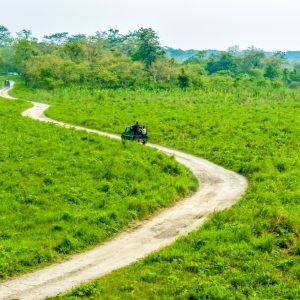Federal Water Tap, June 7: First Slice of Low-Income Water Bill Assistance Funds Available
The Rundown
The Department of Health and Human Services released $166.6 million in funding for a low-income water bill assistance program. Negotiations on an infrastructure package continue. The EPA determines that a proposed mine in northern Minnesota may affect downstream waters, opening the mine to a legal challenge. And lastly, runoff in the upper Missouri River basin is forecasted to be well below normal.
“I think we’re going to keep our options open to see what paths we can move forward on. And certainly, the President is not going to accept a deal that doesn’t help create millions of jobs and make a historic investment in our nation’s infrastructure.” — Jen Psaki, White House press secretary, talking about negotiations on an infrastructure package.
By the Numbers
17.9 million acre-feet: Forecast for the amount of water that will flow into the upper Missouri River basin this summer, or 69 percent of the normal runoff. As a result, hydropower production is expected to be lower than normal.
News Briefs
Some Water Bill Aid Released
The Department of Health and Human Services released $166.6 million in federal funds for a program to help low-income residents pay off their past-due water bills or to reduce their water rates.
The new program — temporary for now, though some Democrats want permanent status — is called LIHWAP. Congress provided more than $1.1 billion in separate appropriations in December and March for the program.
Not all the money will go to people in need. The funding released last week represents about 15 percent of the total. It is intended to be used for administrative costs in setting up the program at the state and local levels.
DHHS also detailed the allocations for each state, tribe, and territory. For states, the amounts range from $1.7 million (Wyoming) to $116 million (California). North Dakota opted not to join the program.
Before states, tribes, and territories receive the remainder of their funds, they must submit a plan for identifying eligible households, enrolling them, coordinating the transfer of payments to utilities, and ensuring that the benefits reach households. It’s not a simple task.
DHHS has developed a model plan that states can use if they would like.
In context: Federal Aid for Overdue Water Bills Is Slow to Arrive
Studies and Reports
EPA Scrutinizes Proposed Mine in Minnesota
The U.S. Environmental Protection Agency determined that a proposed copper-nickel mine in northern Minnesota “may affect” downstream waters of the Fond du Lac Band of Lake Superior Chippewa and of Wisconsin.
The determination begins a process that could result in stricter conditions on the PolyMet mine’s permit to dredge and fill in wetlands or an outright cancellation of the permit.
The two entities — the Fond du Lac Band and Wisconsin — now have 60 days to request a hearing to challenge the mine’s permit.
The Fond du Lac Band had sued the EPA, claiming the agency did not adequately consult with them on the mine. After a court ruling and at the EPA’s request, the Army Corps of Engineers suspended the mine’s Clean Water Act Section 404 permit in March.
Now that the EPA has said that the mine may affect downstream waters, the Army Corps’ permit could be reviewed.
On the Radar
Infrastructure Meeting
After a series of discussions last week, the White House and Senate Republicans failed to clinch an infrastructure deal.
Both sides said they would reconvene on Monday.
Congressional Hearings
On June 9, the Senate Committee on Environment and Public Works will hold a hearing on PFAS, advertising that it will solicit views from “affected citizens and states.”
On June 11, the House Select Committee on the Climate Crisis will hold a hearing on building resilient communities. Mayors will testify.
IBWC Meeting
The International Boundary and Water Commission will hold a public meeting on June 10 to discuss Arizona’s water reductions if a Colorado River shortage is declared in 2022, as is expected.
In context: Amid Dire Colorado River Outlook, States Plan to Tap Their Lake Mead Savings Accounts
Federal Water Tap is a weekly digest spotting trends in U.S. government water policy. To get more water news, follow Circle of Blue on Twitter and sign up for our newsletter.
Brett writes about agriculture, energy, infrastructure, and the politics and economics of water in the United States. He also writes the Federal Water Tap, Circle of Blue’s weekly digest of U.S. government water news. He is the winner of two Society of Environmental Journalists reporting awards, one of the top honors in American environmental journalism: first place for explanatory reporting for a series on septic system pollution in the United States(2016) and third place for beat reporting in a small market (2014). He received the Sierra Club’s Distinguished Service Award in 2018. Brett lives in Seattle, where he hikes the mountains and bakes pies. Contact Brett Walton





Leave a Reply
Want to join the discussion?Feel free to contribute!